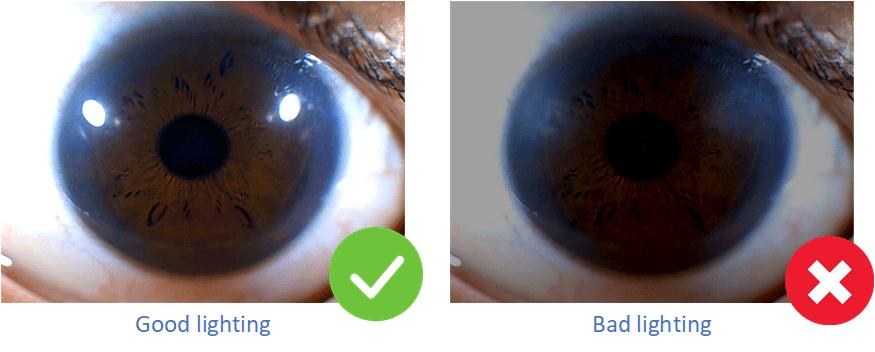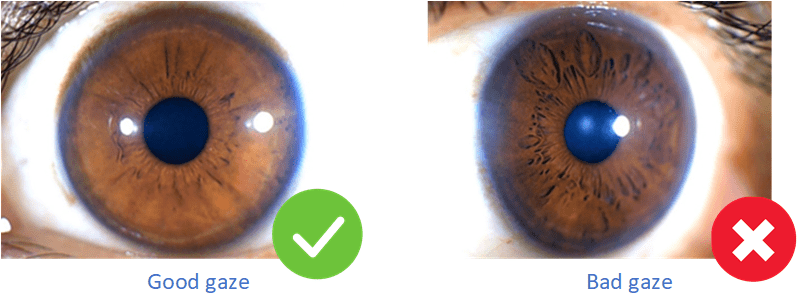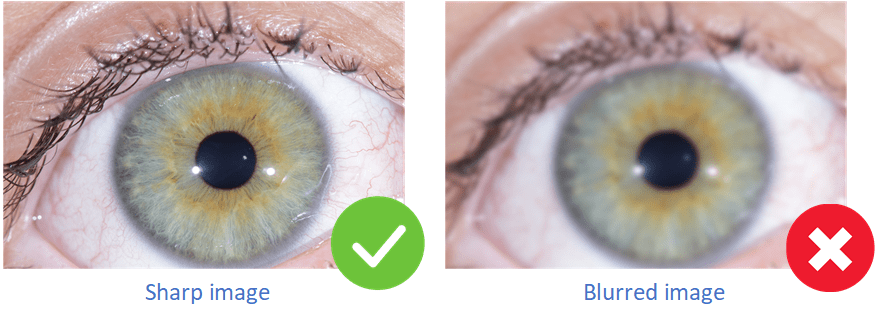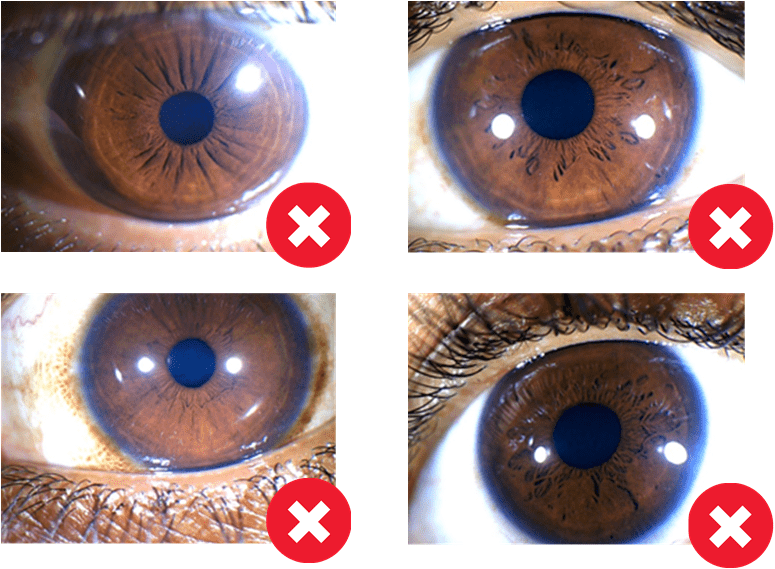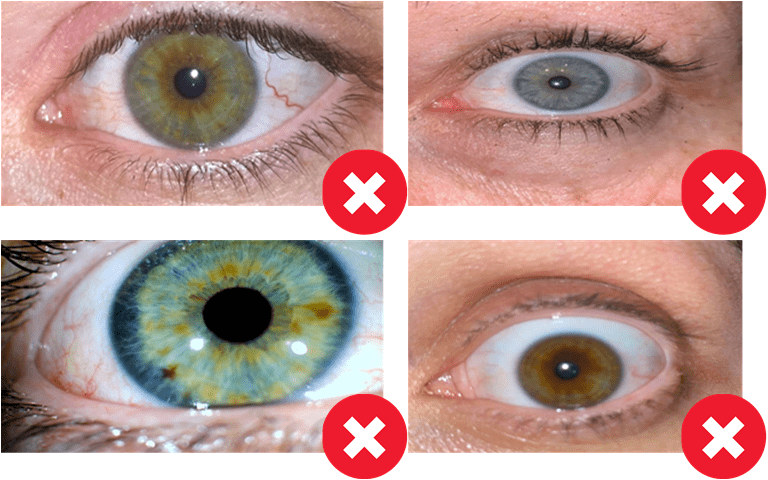The program uses two images in order to function. The two images should consist,
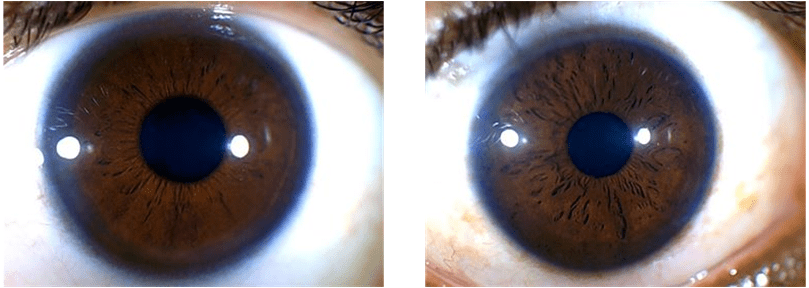
Resolution on your professional camera should be at least greater than 5MP. The images can be either 4:3 aspect ratio or 16:9 aspect ratio. (Fig. 2)
| Camera resolution | > 5 Mega-Pixels |
|---|---|
| Image Dimensions |
> 2560*1920 (at 4:3 aspect ratio)
~OR~ > 3072*1728 (at 16:9 aspect ratio) |
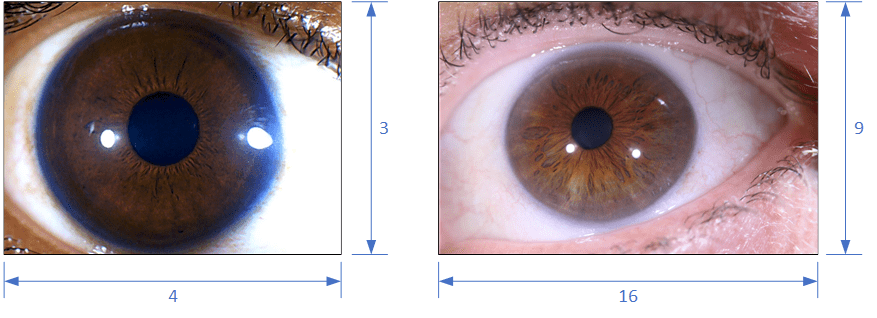
The captured left eye should have the tear duct on the left and lateral canthus on the right. The captured right eye should have the tear duct on the right and lateral canthus on the left. (Fig. 3)
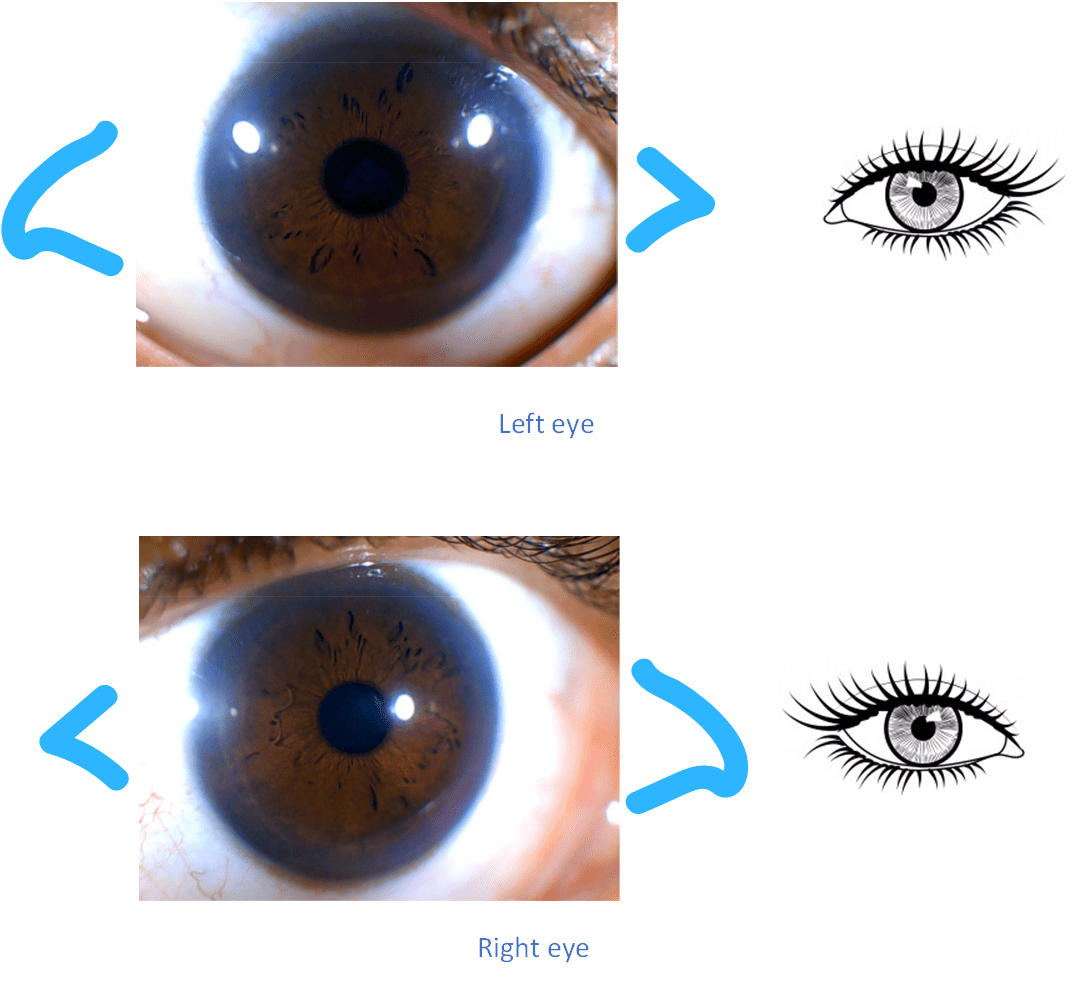
If these conditions are not met, the camera you are using is flipping the images that are taken from it. Please refer the camera settings manual in order to flip the captured image.
It is MANDATORY to use the highest quality image in order to get accurate
results with the Eye Test KFR 2020 Software. Therefore,
cell phone cameras are not compatible with the Eye Test KFR 2020
Software. The resolution on cell phones is modified by additional internal
software integrated into the cell phone. A professional camera does not
modify the image. It produces the exact required resolution without the use
of any additional software.
The EYE TEST KFR 2020 software considers only the iris. Therefore, when
capturing eye images,
care must be taken to ensure the accuracy of the results. Below are
some ideal iris images. Study the following figures in order to take a good
quality image of each eye, which can be used in the program. (Fig. 4)
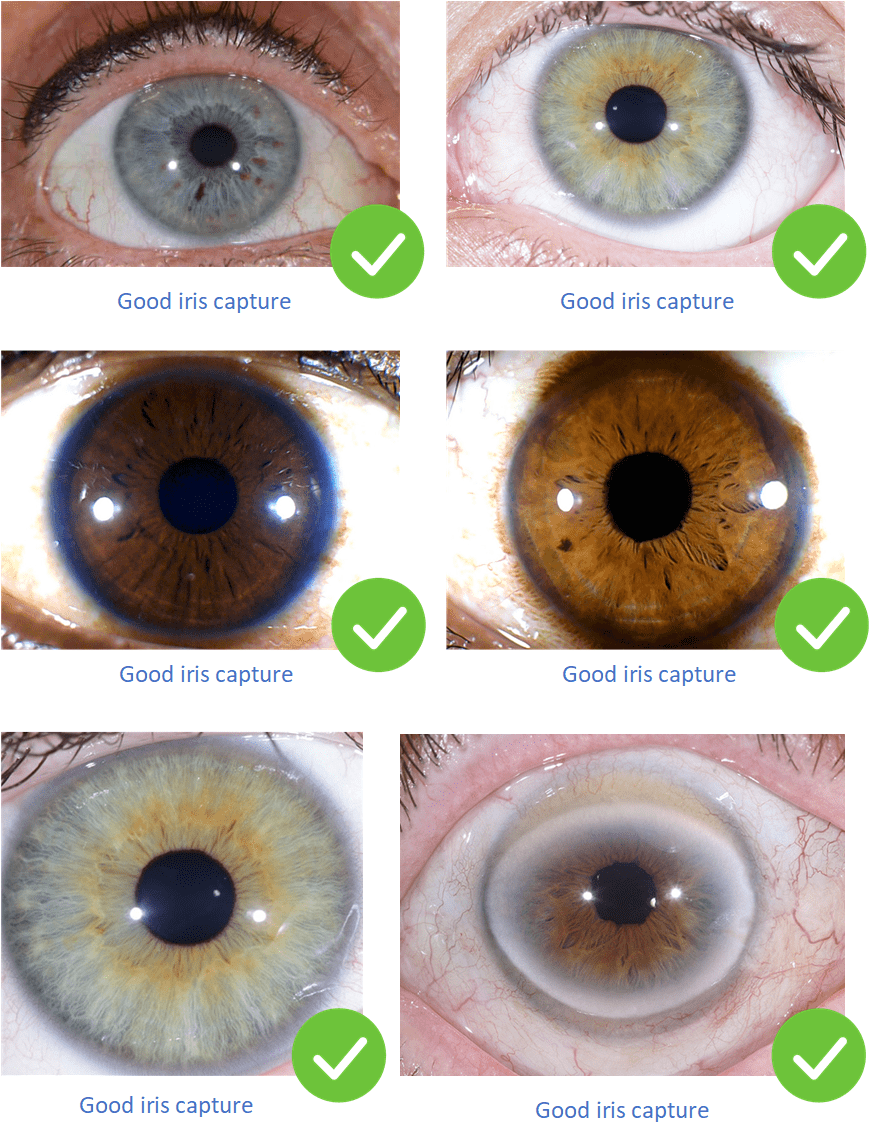
Following are some images taken incorrectly that will affect the results
significantly. Therefore, please ensure that the following mistakes are
avoided. (Fig. 5)
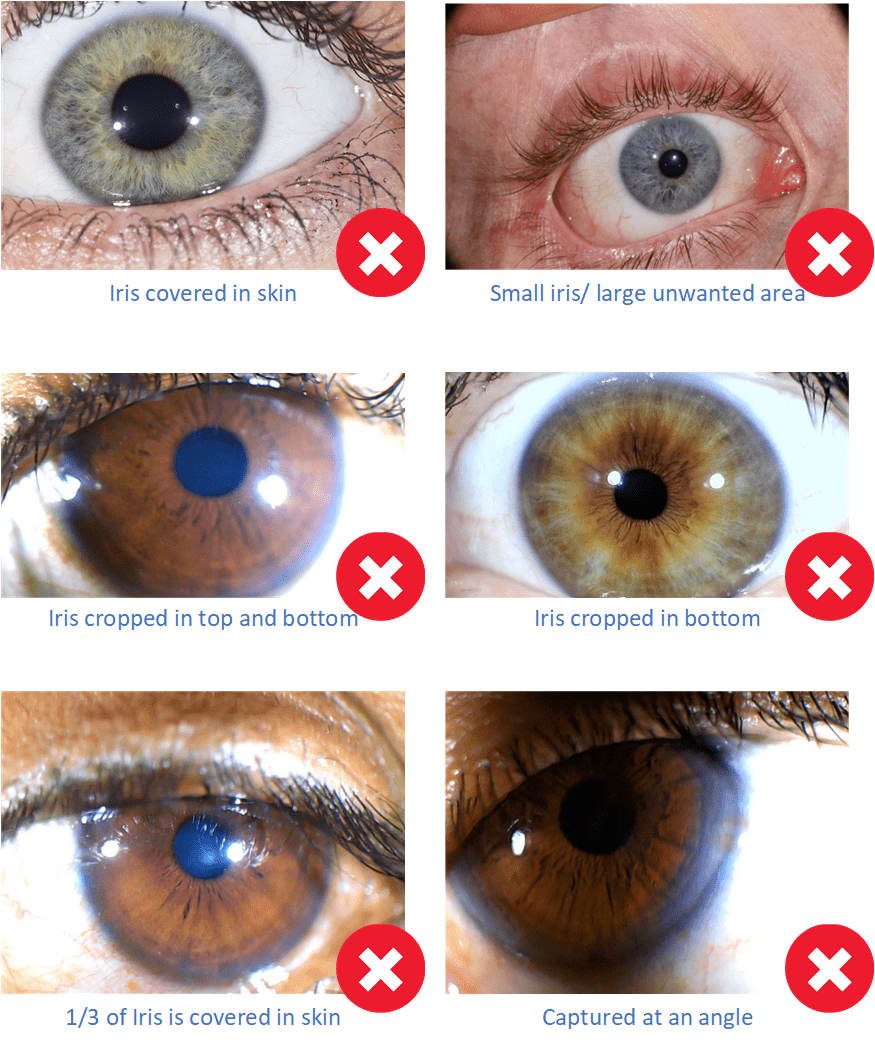
Please note the following areas of concern:
